Registered Venus Flytrap cultivars
Over the past few decades, at least 3 dozen cultivars of the Venus flytrap have been created. The majority of these cultivars belong to the Dionaea group- these cultivars all have traps with tooth or triangular-like structures to capture prey. A good number of these cultivars can be found in nurseries and flower shops, but because of the demand for these plants, many remain sold out. At present, the registered cultivars include the following:
-
Dionaea muscipula ‘Akai Ryu’ (Japanese for Red Dragon) is a beautiful Venus fly trap most well known for its deep burgundy traps and vivid red stems. The Akai Ryu Venus fly trap was created by Ron Gagliardo and introduced more than 2 decades ago by the Atlanta Botanical Gardens. This particular Venus flytrap is known to have rapid growth with large traps that can measure 4 inches when fully mature. To maintain the deep purple-reddish hue, the Akai Ryu requires at least 8-10 hours of sun exposure daily.
-
Dionaea muscipula ‘Alien’ (named after the movie Alien) was first created in Europe. It is recognized by several features that include a row of short teeth, long arched traps, and trigger hairs that grow in aggregates or rosette formation. Because the leaves are curved, the trap does not always close well on its own. If you decide to grow it indoors, you may need to supplement the soil with a kelp-based fertilizer at least once a month. When fully grown the Alien will have vivid green-orange-bluish traps.
-
Dionaea muscipula ‘B52’ is not named after the US air force bomber but because of its huge traps which often are more than 2 inches in length. The B52 was created by Henning Von Schmeling who used B52 to code the plant and the term has stood since then. The B52 is most well known for its large size and clumping growth, which enables it to capture prey efficiently.
-
Dionaea muscipula ‘Blanche Hermine’ is a European white Venus flytrap that was created by chance in 2008. This particular plant has slow growth and because of the lack of chlorophyll, the leaves remain partially white. During winter, the fur goes whitish but the tail end remains black. Some growers have noted that heavy sun exposure prevents whitish leaves.
-
Dionaea muscipula ‘Dentate Traps’ is most well known for its short triangular or serrated edge-like appearance. Over the years many varieties of this cultivar have been created including Dionaea Dente, Dionaea Jaws, Dionaea sawtooth, and Dionaea piranha. Despite the fierce-looking appearance, the trap often does not close completely, allowing many prey to escape.
-
Dionaea muscipula ‘Bohemian Garnet’ is another cultivar of the Venus fly trap that was developed in 2007 in the Czech republic. It is a cross between the Dionaea Sawtooth and Dionaea Royal Red. The plant is relatively small in size but has pleasant red coloration similar to the Akai Ryu.
-
Dionaea Big Mouth is often referred to as ‘Red-Purple’ because of the intense coloration on the inside of the trap. This plant features a very large trap on short stubby leaves and small teeth.
-
Dionaea muscipula ‘Clayton’s Red Sunset’ is a beautiful Venus fly trap with a blend of colors ranging from red to green on the outer leaves. The Red sunset is relatively easy to grow and tolerates even slightly cooler temperatures without any problems. However, it needs an ample supply of water and sun to thrive.
-
Dionaea muscipula ‘Coquillage’ is a relatively new cultivar that resembles a shell. It has uniquely shaped traps with small teeth that mimic a shell. This particular plant needs ample water and has rapid growth during warm temperatures.
-
Dionaea muscipula ‘Cupped Trap’ was introduced in 2004 and is a rare small Venus flytrap plant. It is unique in that the trap looks like two shallow plates adhered at the bottom. The outer surface is usually green and the inside is a beautiful maroon or purplish-red color. It is a finicky plant to grow. Because the rhizome has a habit of dividing frequently, the cupped trap fails to grow in size and usually remains small.
-
Dionaea Dentate traps is one of the most well-known cultivars. It has a nice greenish hue with triangular teeth which are effective at keeping the trap closed with the prey inside.
-
Dionaea Fused tooth has had mutation issues. It only has a few spines and even the spines that are present remain fused. Even though it has pleasant burgundy colors to attract prey, this particular plant is not well adapted at catching insects.
-
Dionaea Green Dragon is a mirror image of the Akai Ryu. It is similar in size and color to the Akai Ryu. The outer surface of the trap has a rough greenish texture with slender teeth.
-
Dionaea Holland Red is similar to the Red and Green Dragon plants. It has slightly slender leaves with serrated teeth. Adequate exposure to the sun will help temporarily change the color to green.
-
Dionaea Jaws has a trap that mimics the mouth of a shark. Jaws is a relatively large-sized trap with a deep red-colored trap. This particular Venus flytrap is very efficient at capturing prey
-
All microdent cultivars have one common feature- the small size of their teeth. These are some of the easiest Venus flytraps to grow inside the home. The outer leaf is usually green and the inside has a blend of whitish red hue.
-
Dionaea ‘Justina Davis’ is a relatively new cultivar with greenish orange traps. Despite exposure to the sun, the traps remain the same color
-
Dionaea ‘Korean Melody Shark’ is a small plant with a peculiar appearance. The traps are underdeveloped and the closure is not always complete. The trap edges reflect a merger of sharp teeth and musical notes. On the plus side, the inside has a pleasant greenish color with a slight reddish tinge in the center.
-
Dionaea muscipula ‘Fondue’ was created in 2008 and a key feature of this plant is the odd-looking shape of the trap- they look like melted plastic or molten metal- this feature is commonly seen during the summer. Because of the shape and ‘plastic-like’ features of the trap, it frequently is unable to catch prey. To invite prey, the inside of the trap has a vivid red hue.
-
Dionaea ‘Louchapates’ is most well known because of its long spines. The teeth in the Louchapates are wider and flatter compared to the usual Venus flytraps. This particular plant has a vivid burgundy color and is not difficult to grow, Unfortunately, the long spines often allow tiny prey to escape and supplemental soil nutrition may be required.
-
Dionaea Red Burgundy is a red-burgundy Venus flytrap cultivar. It has much faster growth than the other red varieties of the plant. Both the outer and inner leaves of the trap will be burgundy in color
-
Dionaea ‘Mirror’ is a unique plant with a partial additional trap on the side and back of the main trap. The development of the partial trap may vary from little to full wings. The double traps appear at the start of the growing season.
-
Dionaea Red Piranha, named after the flesh-eating fish from the Amazon, is very similar to the Akai Ryu in color. It has distinct triangular spines that resemble the traps of the dentate cultivar. It has a high success rate of trapping prey.
-
Dionaea petite dragon is a miniature version of the Akai Ryu cultivar. Further, as the plant matures, the flower stalk usually split into 2 stalks. It is one of the easier Venus flytraps to grow inside and is also quite tolerant of slightly cooler temperatures.
-
Dionaea Sawtooth is another member of the Dentate traps. It is easily recognized by its vivid green color and the triangular teeth that resemble a saw. A unique feature of this cultivar is that the triangular teeth are further subdivided into 2-3 additional smaller teeth. Unfortunately, this often causes the edge of the trap to become frayed and trapping of the prey is not always 100%
-
Dionaea ‘Scarlet Bristle’ has a gentle inner reddish hue coupled with a greenish edge with its distinct spines and trigger hairs. This particular plant got its name from the Infection- scarlet fever- which also has a similar colored rash
-
Dionaea Wacky traps is much different from the usual Venus flytraps. It has long and much thicker traps which tend to close very slowly sometimes taking several minutes for complete closure. ‘Wacky Traps’ is one of the slowest growing Venus traps with odd-looking flowers. It is not meant for the novice as it does require supplemental feeding and takes forever to mature.

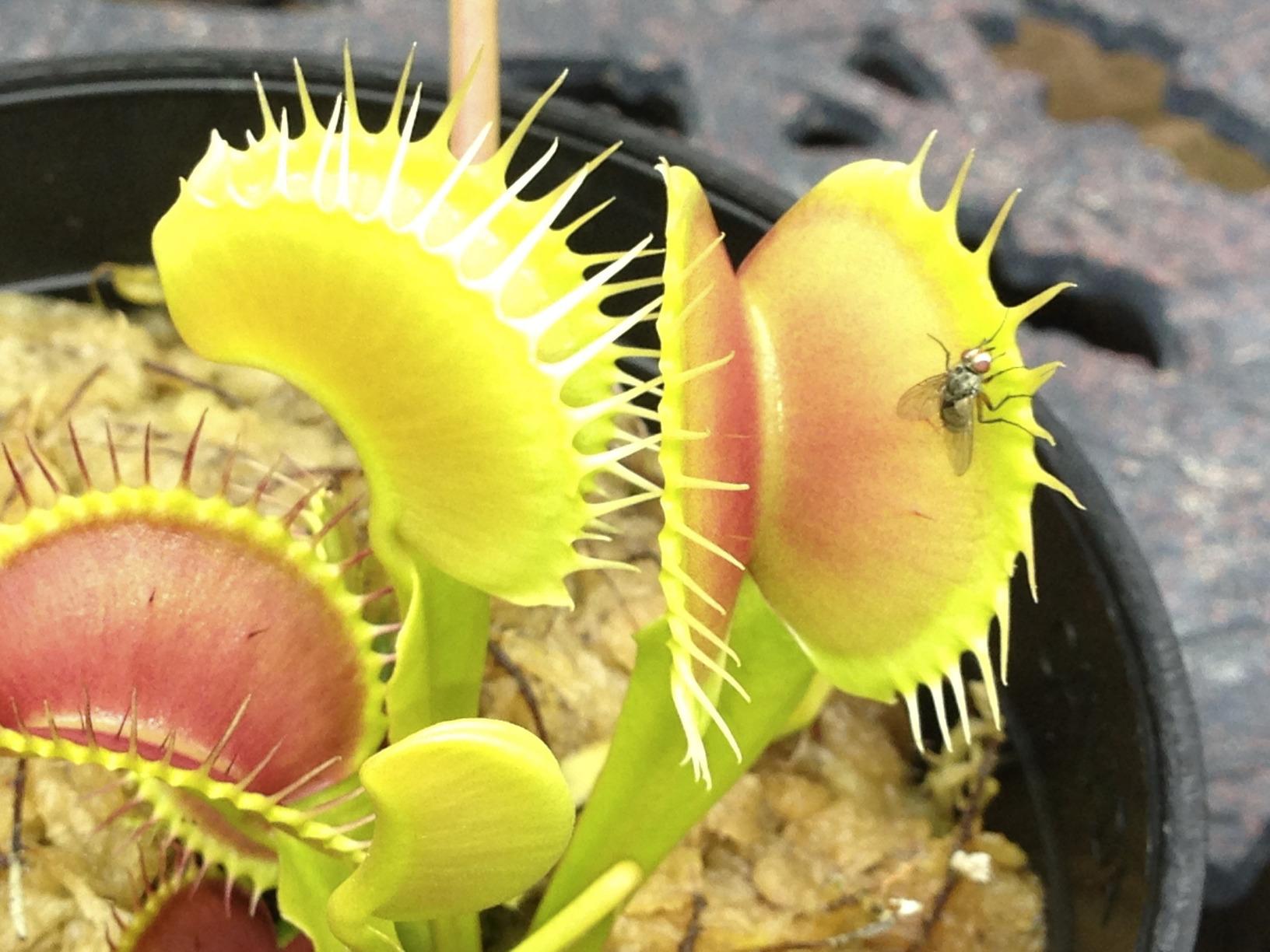
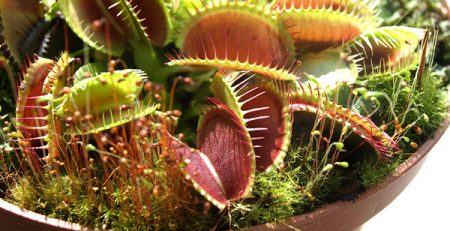
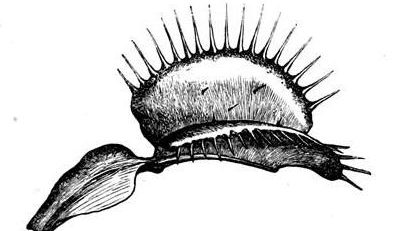
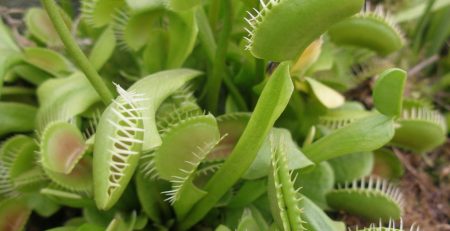
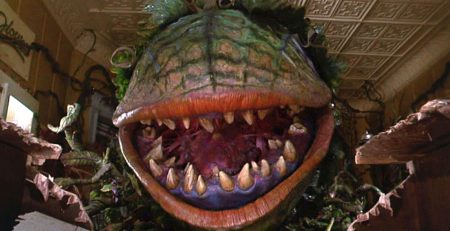
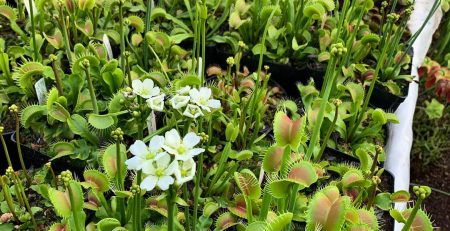
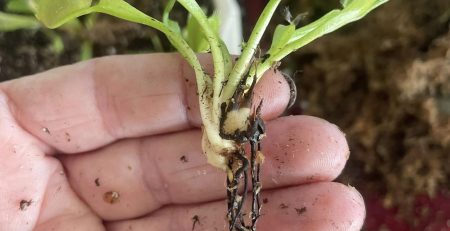
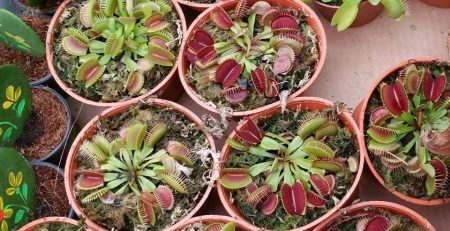
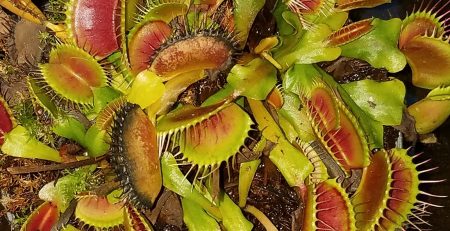
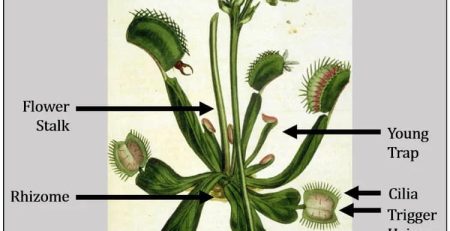
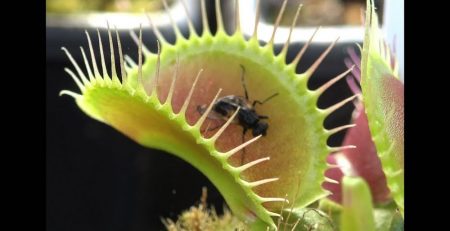
Leave a Reply
You must be logged in to post a comment.